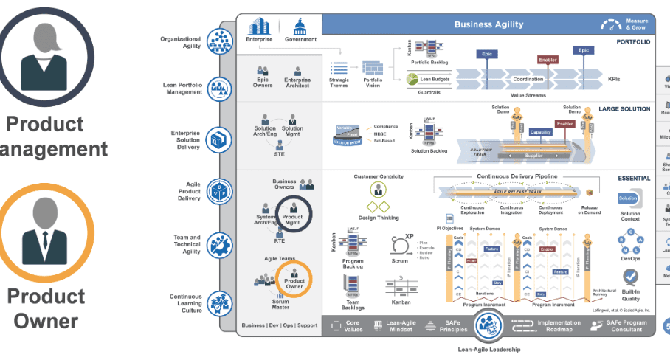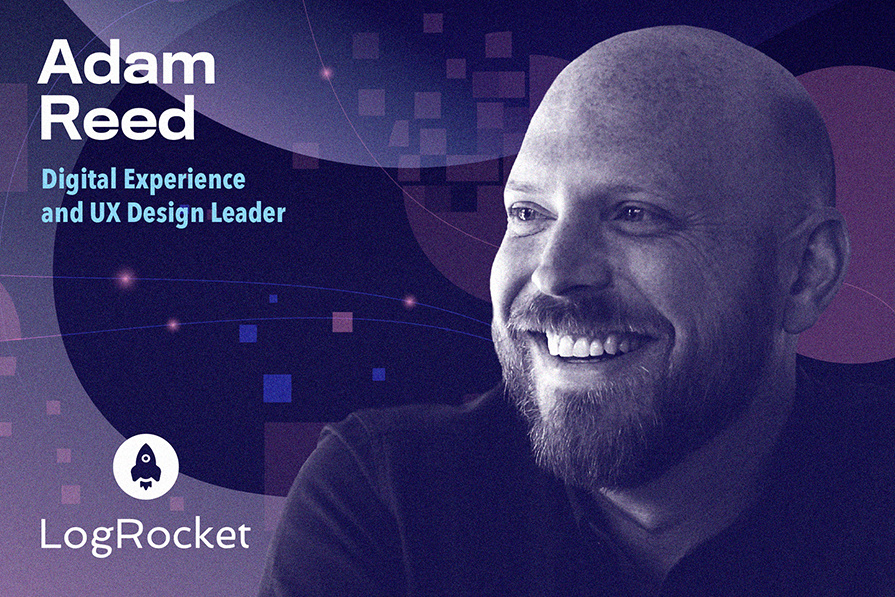Product Management News
Medium
149

When to Say No to AI: A Product Manager’s Guide to Responsible Innovation
- Product managers are often advised to innovate, but sometimes it's important to know when to say no to AI for responsible innovation.
- AI should make tasks easier, faster, or better; if not, it's better to skip it to avoid complicating workflows.
- It's crucial to ensure that AI reflects diverse data sets to perform well across different user groups and regions.
- Before implementing AI, consider if a simpler solution like a rule-based system could be more effective in achieving the desired outcome.
Read Full Article
8 Likes
Medium
126

Image Credit: Medium
Product Owner vs Product Manager in SAFe
- Product Owner in SAFe focuses on tactical execution, representing the customer at the team level and ensuring value delivery in each iteration.
- Key responsibilities of a Product Owner include managing the team backlog, breaking down features into user stories, and collaborating with the development team.
- Product Manager in SAFe operates at a strategic level, managing the Program Backlog, driving vision, strategy, and roadmap for the product.
- SAFe distinguishes between the Product Manager and Product Owner roles to allow specialization, collaboration, and effective scaling of Agile in large enterprises.
Read Full Article
7 Likes
Logrocket
113

Image Credit: Logrocket
Leader Spotlight: How digital experiences enhance in-person moments, with Adam Reed
- Adam Reed has a background in digital experience and design, having worked at various firms before landing leadership roles at companies like Intuit, Fidelity, and Transamerica.
- In legacy industries like finance and insurance, the focus is on using digital solutions to enhance, not replace, human experiences, building trust and relationships through design and UX.
- Creating unique and memorable digital experiences involves looking at how digital can improve in-person interactions, such as personalizing in-branch visits and utilizing technology to enhance trust.
- Tools like empathy mapping, persona development, and customer journey mapping help in understanding user needs and friction points to design more human-centered experiences.
- To engage infrequent users on platforms, Adam suggests presenting updates when users are paying attention, providing clear next steps after core tasks, and offering personalized recommendations for added value.
- At Fidelity, Adam successfully increased customer engagement by communicating the full range of benefits offered and demonstrating how customers can derive even more value from the services.
- In scenarios where users log in infrequently, an omnichannel approach, personalized communication, and leveraging agents' relationships are key strategies to highlight new capabilities and products.
- Design and content play crucial roles in making tangible, value-driven connections to users, driving business value through research, personalization, and emotional human-computer interactions.
- By focusing on enhancing human experiences through digital solutions and leveraging tools to understand user needs, Adam Reed highlights the importance of building trust, relationships, and value in the digital space.
- Engaging infrequent users involves presenting updates effectively, providing clear next steps, and offering personalized recommendations for added value, as demonstrated in Adam's successful engagement strategies.
Read Full Article
6 Likes
Medium
244

Image Credit: Medium
Why Your FinOps Wins Feel Hollow
- Finance leaders often feel disconnected from the outcomes provided by FinOps initiatives.
- Introducing the FinOps Product Canvas as a practical solution to bridge this gap.
- The Canvas focuses on building FinOps products that address finance priorities like unit economics, forecast accuracy, and margin clarity.
- By using the Canvas, teams can realign themselves and deliver tangible results in just 90 days.
Read Full Article
14 Likes
Discover more
- Programming News
- Software News
- Web Design
- Devops News
- Open Source News
- Databases
- Cloud News
- Operating Systems News
- Agile Methodology News
- Computer Engineering
- Startup News
- Cryptocurrency News
- Technology News
- Blockchain News
- Data Science News
- AR News
- Apple News
- Cyber Security News
- Leadership News
- Gaming News
- Automobiles News
Medium
108

Image Credit: Medium
The Secret Detective Work Nobody Talks About: My User Research Journey
- User research involves figuring out what products or apps people really need, akin to detective work.
- The process of user research is more complex than simply asking people what they want.
- The importance of digging deeper and understanding what users are truly expressing was emphasized during a User Research class at Carnegie Mellon.
- Initially frustrated, the individual learned the significance of asking 'why' and delving deeper into user insights during formal user research.
Read Full Article
6 Likes
Medium
285

Image Credit: Medium
If Curiosity Were a Degree, I’d Have a PhD
- The author shares a personal anecdote of fixing a machine in his dad's shop by relying on observation and curiosity.
- Throughout his life, he emphasizes the importance of curiosity in driving his learning and problem-solving.
- He highlights his diverse experience in technology, startups, and leadership based on his curiosity-driven approach.
- The author expresses his readiness for a new role that values curiosity, initiative, and problem-solving skills over formal qualifications.
Read Full Article
17 Likes
Medium
32

Image Credit: Medium
Why ‘Fail Fast’ Is Bad Advice in 2025
- "Fail fast, fail often" mantra in Silicon Valley is being reconsidered in 2025.
- Advancements like AI tools and no-code platforms have made building easier, shifting focus to the need for clarity over rapid execution.
- The concept of failing fast was rooted in Lean Startup principles but is now seen as outdated in the current landscape.
- The emphasis is now on strategic planning and clear direction rather than rapid experimentation.
Read Full Article
1 Like
Medium
357
Image Credit: Medium
Founder Fuel: How to turn your roadmap into a portfolio before it becomes a graveyard
- Founder Fuel series offers guidance for founders in high-stakes markets.
- Article discusses how to manage roadmaps like a portfolio and not a to-do list.
- Encourages treating product decisions as investments and categorizing roadmap items.
- Introduces the concept of horizon planning for balancing short-term and long-term goals.
- Provides a framework (VITALS) for scoring and prioritizing roadmap initiatives.
- Suggests using a 3x3 Portfolio Matrix to make sharper decisions on bets.
- Emphasizes the importance of aligning roadmap items with a clear thematic focus.
- Encourages founders to prioritize building conviction and strategic clarity in roadmaps.
- Ultimately, the article urges founders to invest in the future with roadmap decisions.
- Roadmaps should earn attention, usage, and support for raising future funds.
Read Full Article
21 Likes
Medium
185

Why This Blog
- Director in digital health stepped away from corporate ladder to get closer to problem solving and building.
- To pursue passion in problem solving, the individual took a CSPO course, read books, and listened to product podcasts.
- The blog will document the learning journey, product reviews, framework breakdowns, and insights on problem-solving as a product manager.
Read Full Article
11 Likes
Medium
95

Image Credit: Medium
Building for the Next Billion: What Code, AI and My Mother’s Wisdom Are Teaching Me About Product…
- The author reflects on his experience in product management while incorporating his mother's resourcefulness and AI tools into his workflow.
- He discusses 'vibe coding,' a process of collaborating with AI tools like Cursor and ChatGPT to code concept by concept with a focus on flow over formality.
- The shift in product management enabled by AI allows modern PMs to not only define but also deliver by building functional drafts and testing hypotheses themselves.
- The article emphasizes the importance of patience, judgment, taste, and product sense in utilizing AI tools effectively while continuing to hold the product vision as a compass.
Read Full Article
5 Likes
Medium
221

Image Credit: Medium
Cross-Functional Collaboration: How to Speak Engineer, PM, and Business
- Innovation in today's product landscape happens through cross-functional collaboration involving designers, engineers, product managers, and business stakeholders.
- Effective communication among these disciplines is vital for transforming a team into a cohesive unit.
- Key tips for communicating with engineers, product managers, and business stakeholders were provided in the article.
- Developing empathy, understanding motivations, and tailoring communication approaches can lead to smoother projects, stronger teams, and better outcomes.
Read Full Article
13 Likes
Medium
117

Image Credit: Medium
Getting Started with Product Management
- Product Management is the process of bringing a new product to the market or developing an existing one to meet business goals and user needs.
- Product Management involves discovering valuable, usable, and feasible products, as highlighted by Marty Cagan.
- Product Managers are individuals who implement Product Management by discovering product opportunities, prioritizing resources, collaborating across departments, and aligning business priorities with customer needs.
- Product Management is crucial for delivering value to customers based on their needs, with Product Managers playing a key role at the intersection of business, technology, and user experience.
Read Full Article
7 Likes
Logrocket
172

Image Credit: Logrocket
Six habits that changed my PM-engineering partnerships
- Product work benefits from integrated, messy, co-created partnerships grounded in shared ownership, open dialogue, and trust.
- Co-writing PRDs with engineers fosters shared vision, creativity, and builds emotional investment in the product.
- Putting engineers on user calls enhances empathy, leads to user-centric design, and improves product outcomes.
- Alignment sessions promote ownership among engineers, driving deeper engagement and collaboration.
- Embracing conflict constructively and addressing constraints openly leads to better decision-making and collaboration.
- Publicly celebrating engineers' contributions fosters a positive culture, recognition, and ownership.
- Encouraging engineers to share their ideas and involving them in product vision enhances creativity and ownership.
- Abandoning the traditional PM-to-engineer handoff model in favor of shared understanding and collaboration is crucial for success.
- True alignment in product development is based on trust, shared purpose, and genuine collaboration, not just following processes.
- Building software requires partnership, honesty, and a shift towards shared ownership to achieve shared success.
Read Full Article
10 Likes
Medium
90

Image Credit: Medium
How I’d Redesign WhatsApp Groups: Tackling Notification Overload
- WhatsApp groups face notification overload issues, especially in countries like India where group chats are popular.
- Notification fatigue leads to users missing important updates, muting or leaving groups, affecting professionals, parents, students, and entrepreneurs.
- With the rise in remote work and online classes, the problem of notification overload in WhatsApp groups has become more prevalent.
- Proposed solutions include Smart Notification Digest, Priority Messages & Personalization, and Threads and Highlights to improve user experience and reduce notification stress.
Read Full Article
5 Likes
Medium
194

Image Credit: Medium
The KISS Philosophy in Product Management
- Six months into a project with a brilliant team and extensive roadmap, the team faced challenges including an overloaded MVP and a confusing backlog.
- During a retrospective meeting, someone suggested simplifying the approach, leading to the realization of the power of the KISS Philosophy in product management.
- The KISS Philosophy, which stands for Keep It Simple, Stupid, emphasizes that simple systems perform better.
- In product management, applying the KISS principle involves reducing noise, eliminating unnecessary features, and focusing on clarity for both the team and the user.
Read Full Article
11 Likes
For uninterrupted reading, download the app